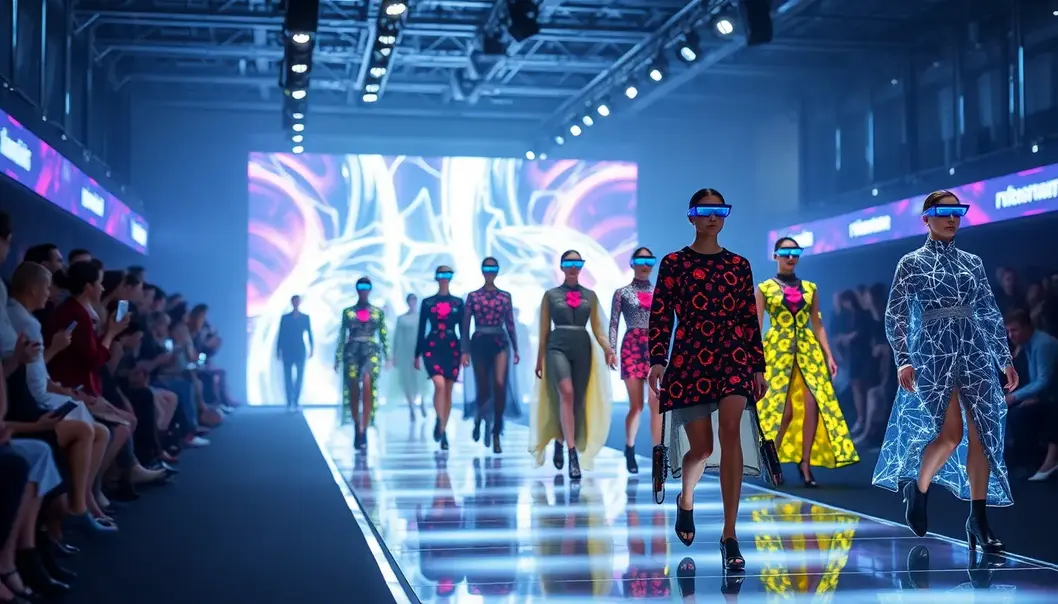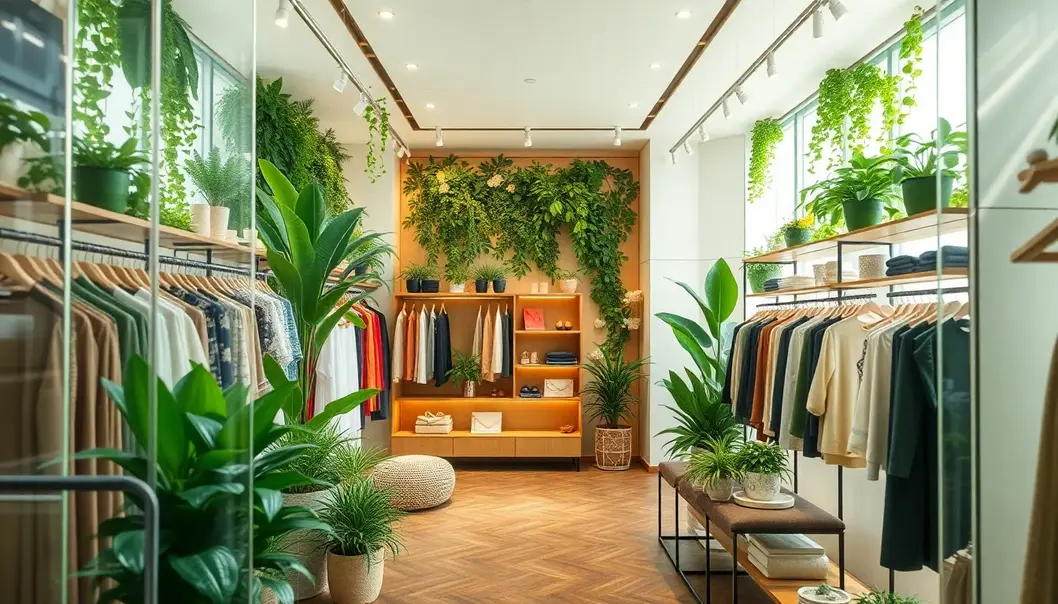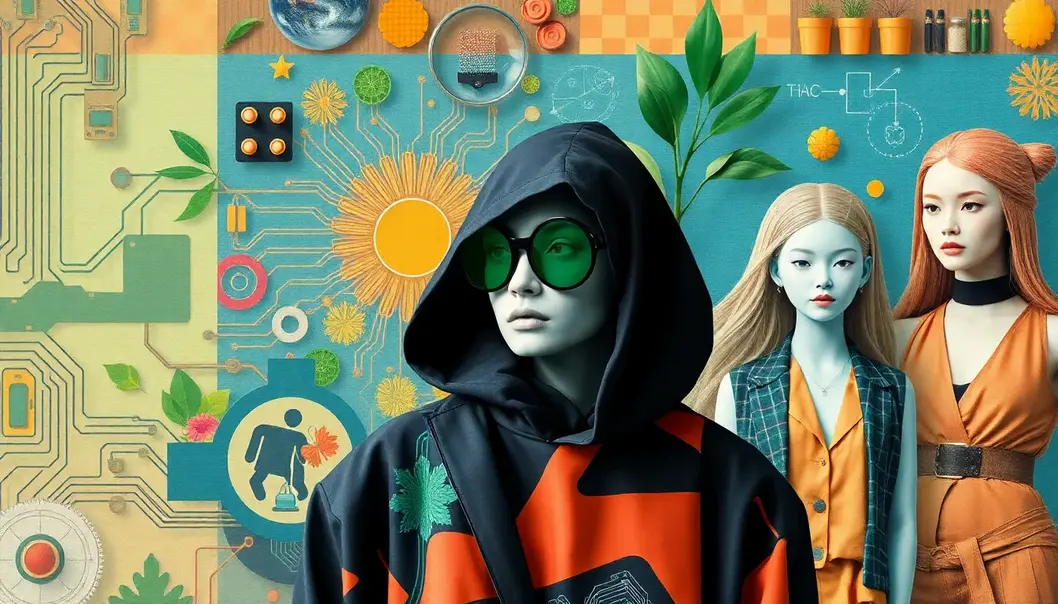Fashion in 2025 is poised to become a symbolic tapestry of innovation, sustainability, and technology. As the industry navigates its environmental responsibilities, designers are blending high-tech fabrics with eco-friendly practices, paving the way for smart fashion choices. Fashion lovers and creative analysts can expect automated clothing customization to revolutionize personal style while sustainable luxury reinvents opulence. These transformations speak volumes about the ever-evolving trends that will dominate wardrobes worldwide. This article delves into two key arenas shaping the future – tech-integrated couture and sustainable elegance, promising a glimpse into the cutting-edge patterns set to captivate fashion-forward enthusiasts.
Tech-Integrated Couture: The Smart Style Revolution

As we venture into 2025, the interplay between technology and couture unveils a landscape transformed by innovation. Advanced smart fabrics, wearable tech, and augmented garments are crafting a fresh narrative in personal style, redefining both aesthetics and functionality in fashion.
Smart fabrics have evolved from being a novelty to a norm in high fashion. These materials, embedded with microchips and sensors, now offer a seamless fusion of form and function. Imagine a dress that adjusts its temperature according to the wearer’s body heat, or a suit that monitors heart rate and posture. Such innovations not only enhance comfort but offer health tracking and even mood-based color changes, personalizing garments at an unprecedented level.
Wearable technology has taken a quantum leap by integrating with fashion in subtle, sophisticated ways. Gone are the days of clunky gadgets. Today, tech is interwoven with textiles, creating garments that are both stylish and functional. These advancements allow dresses to light up at night for safety, or accessories like bracelets to serve as both ornament and navigational aid, providing haptic feedback for directions.
The rise of automated fashion has further obliterated the boundaries of traditional couture. Through automation, garments are no longer just static pieces of art. Instead, they dynamically interact with the environment, making real-time adjustments in design and appearance. For example, dresses can transform in silhouette or pattern through actuators woven into the fabric, adapting from casual daywear to elegant evening couture seamlessly.
Augmented garments are another breakthrough, offering an extended reality experience. These clothing items provide wearers with digital augmentation layers visible through AR glasses, transforming a simple coat into a digital canvas. This kind of integration not only enhances the garment’s visual appeal but also enables countless customizations, blurring the line between the physical and the virtual. Designers are exploring how augmented reality can transform runway shows into interactive spectacles that engage audiences in immersive brand experiences.
Trailblazing designers and avant-garde brands are at the forefront of this smart style revolution. A growing faction of visionary fashion houses and tech startups are pushing the envelope, creating collections that exemplify the harmonious blend of fashion and technology. By leveraging cutting-edge technology, they are redefining not just style but the very ethos of couture, once perceived as the pinnacle of exclusivity.
This tech-integrated shift is not merely about aesthetics; it fosters a deeper connection to fashion by aligning garments with individual lifestyles and values. As every piece adapts to the wearer and environment, couture becomes more interactive, breaking away from yesterday’s static elegance to embrace a dynamic, responsive future.
The integration of technology into fashion is a testament to the transformative power of innovation in human dressing habits. A realm once dominated by tradition and manual craftsmanship, couture now stands at the precipice of a digital-led renaissance, poised to redefine luxury, individuality, and sustainability in equal measure.
Sustainable Elegance: The New Face of Luxury

In 2025, the convergence of sustainability and luxury fashion sets a new benchmark for elegance. As awareness of environmental impacts grows, opulence no longer equates to excess but rather aligns with conscientious choices. Consumers are seeking eco-friendly materials and ethical production methods, urging luxury brands to innovate.
One of the forefront advancements in sustainable luxury is the development of bio-fabrics. These innovative materials, often derived from natural sources such as algae, bamboo, and mycelium, offer sustainable alternatives to traditional textiles. Bio-fabrics decompose naturally, reducing waste and limiting environmental impact. Their adoption in high fashion signifies a commitment to the future, ensuring garments are as kind to the planet as they are to the wallet.
Beyond materials, the principle of circular fashion has gained traction as a sustainability model. This approach focuses on designing products with the end in mind, emphasizing repairability, recyclability, and durability. Brands are implementing take-back schemes that encourage consumers to return worn items for recycling or refurbishment, thus closing the loop in the fashion lifecycle. Circular fashion helps minimize resource use and waste, creating a harmonious blend of luxury and sustainability.
Furthermore, ethical production methods are reshaping consumer expectations of luxury brands. Transparency in supply chains and fair labor practices are becoming non-negotiable aspects for discerning consumers. By prioritizing these values, brands not only enhance their image but also support communities involved in the production process, fostering a more equitable industry.
Consumer perceptions of luxury are undoubtedly shifting, with a growing emphasis on stories behind garments. Shoppers value knowing the journey a product takes from conception to purchase, seeking assurance that their investments support sustainable practices. This shift is compelling even the most established luxury houses to reassess their strategies.
Leading fashion brands have started to champion this sustainable transformation. They are investing in research and development for greener alternatives and partnering with eco-conscious innovators. Through collaborations and conscious campaigns, these brands are redefining luxury as a narrative of responsibility and ethical sophistication.
These trends affirm that sustainable elegance is not just a passing fad but a fundamental reimagining of what luxury truly embodies. The luxury industry is poised to lead by example, demonstrating that it is possible to indulge in elegance without compromising the future. For more on the heroes who make responsible choices daily, check out the inspiring stories at unsung heroes.
Final words
The fashion landscape of 2025 is an exciting blend of technology and sustainability. By embracing tech-integrated couture and sustainable elegance, the industry is crafting a new narrative, one that emphasizes innovation and responsibility. As these trends gain momentum, fashion lovers and trend analysts alike have a front-row seat to witness a revolution that not only changes how garments are made and worn but also how they impact our world. This era invites everyone to celebrate a future where style and ethics walk hand in hand, promising an era of positive transformation.
Intrigued by the future of fashion? Stay ahead of the curve with our exclusive insights and designer collections. Discover more today!
Learn more: https://www.futurefashioninsights.com
About us
Future Fashion Insights offers comprehensive trend analysis and exclusive previews of emerging fashion innovations. Connect with us to explore state-of-the-art collections that seamlessly blend technology and sustainability.

